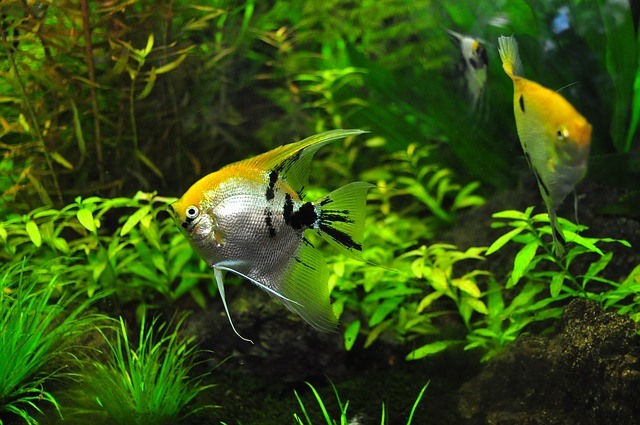If you have a home aquarium, then you have probably heard about the dangers of your tank contracting ich.
But what is it?
Here we break down all you need to know, along with tips for treating it.
Contents
What is Fish Ick?
The scientific name for ich is ichthyophthirius multifiliis, but is often called ‘white spot disease’ or ‘ick.’
It is a protozoan parasitic disease that freshwater fish in tanks tend to get when they are in closer contact with other aquariums species, or when they’re under stress.
It can happen in the wild, but is more likely to occur in a home tank.
Ich is one of the most common and persistent fish diseases. It has a quick reproduction cycle and, because of this, is extremely difficult to get rid of.
It damages the fish’s skin as it enters the tissue and, if untreated, will kill them.
Ich causes ulcers to develop and the skin of the victim to fall off. Because of the damage sustained to their gills, fish with ich cannot intake oxygen from water and will die in tanks with low oxygen levels.
White spot disease is non-transferable to humans.
Signs and Symptoms of Ich Fish
Fish ich looks like grains of salt no bigger than a single millimeter and clings to the fins and gills of your fish.
Your fish may have protruding eyes and swim to the surface more often as the oxygen levels are higher there. They may also have disoriented and disordered swimming habits.
Because of the parasites crossing the membranes of their skin, you will see them scratching on and rubbing against decorative features and large rocks in your aquarium.
Their fins won’t float freely either; they will be folded uncomfortable against their bodies. In advanced stages, they will be lethargic and may have redness or bloody streaks.
How Do Fish Get White Spot Disease?
Fish can get ich when cycle media is transferred from a tank that has white spot disease to one that does not.
Cross contamination is the most common cause, but some tanks have a predisposition to the problem.
Changes in water quality and temperature can accelerate an outbreak of ich, as well as general poor water quality, because of the stress it puts on the fish.
You will want to watch out for decreased water temps, predatory cues (such as crowding and fighting), and increased levels of UV-B radiation to keep white spot disease at bay.
Prevention and Diagnosis of Fish Ick
To avoid introducing white spot disease into your tank:
- Don’t purchase any fish that look sick or are in a tank with other dead fish.
- Never buy plants that were kept in a tank with fish, as the parasites can live in them.
- Don’t overstock your aquarium.
You can’t prevent fish ich with a vaccination, but you can quarantine the infected in a different tank for two weeks and any plants that might be contaminated for four days.
These fish might develop a partial immunity to ichthyophthirius multifiliis, which will paralyze any trophonts that attempt to infect them for a second time.
Diagnosing ich is rather simple, and while it can be done by a veterinarian, it can just as easily be done at home if you have the right tools.
You will need to gently scrape several of the white spots off the fish you believe to be infected and mount them on a microscope slide with a few drops of water.
The mature form of the parasite is dark and moves slowly in a tumbling motion, whereas the infant forms, called tomites, are small, clear, and move quickly.
How to Treat Ichthyophthirius Multifiliis
Treatment of ich is species-specific, as some types of fish won’t tolerate certain medications. You will need to take into account the size and kind of environment in your tank and how many of the fish are infected.
Aside from formalin and malachite green treatments of your tank, there are several other methods to treat both your fish and your aquarium.
- Increasing the water temperature to 86 degrees Fahrenheit or 30 degrees Celsius will speed up the parasites’ life cycles as well as prevent tomont replication. However, not all fish can stand high temperatures, so if you have koi and goldfish, this method isn’t suitable.
- If you have koi and goldfish, you could use chlorine in the form of tap water treatment. This will cure any cyst that exist in a few weeks and will rid any threadlike parasites overnight.
- You might also try adding aquarium salt to your tank, even in freshwater, as the parasites are less tolerant of the salt than the fish are. An amount of no more than 100mg/L would be little enough to be an effective treatment while also remaining safe for your pets.
- Removing the fish from the tank all-together can rid the tank of the parasites as they will die without a host in two days’ time. While this is a viable solution for the aquarium, you will need to find another treatment for the fish themselves.
Here’s a video showing more details about dealing with fish ich.
Do you have any advice for ich fish?




